Radiation Safety and Nuclear Preparedness Guide: Protecting Yourself and Your Family
📌Chapter 1: Introduction to Radiation

Radiation surrounds us, from the sun's warmth to the devices in our homes, playing a critical role in modern life.
It includes power generation and medical treatment, showing multi-dimensional uses and highlighting the role.
Nevertheless, the main point is that radiation should be well understood and used consciously to fulfill the safety requirements.
Understanding Radiation
Radiation is energy that travels through space and can be in the form of electromagnetic waves or particles. It's classified into non-ionizing radiation and Ionizing radiation.
Common Sources in Daily Life
Radiation is all around us. Each source plays a unique role in our lives, from natural sunlight to our daily technology.
- The sun: The most natural radiation source, providing light and warmth.
- Microwaves: Utilize radiation to heat food efficiently and safely.
- Radios: Transmit signals through electromagnetic waves to deliver sound.
- Mobile Phones and Wi-Fi: Emit non-ionizing electromagnetic fields (EMFs) that are omnipresent in our digital world. While the health impacts of long-term exposure are still under study, maintaining a balanced use is advised.
- Building Materials and Earth: Naturally occurring radioactive materials (NORM) in the ground and building materials like bricks and concrete contribute to our background radiation exposure.
- Medical Devices: Besides X-rays, other medical devices, such as CT scanners and PET devices, also use radiation to create detailed images of the inside of the body.
Beneficial Applications
Radiation is a powerful tool across various fields, offering innovative solutions for medical care, energy production, environmental sustainability, and the preservation of cultural heritage.
- Medical Treatments: From diagnosing diseases with X-rays to treating cancer with radiation therapy.
- Power Generation: Nuclear power plants produce electricity through nuclear fission.
- Environmental Protection: Radiation helps treat wastewater and improve crop resilience to climate change.
- Sterilization: Radiation sterilizes medical instruments, food items, and even mail, ensuring they are free from bacteria and viruses without using chemicals.
- Agricultural Improvements: Radiation-induced plant mutations have led to new, more resilient crop varieties, enhancing food security.
- Art and Cultural Heritage Preservation: Radiation techniques help preserve and authenticate artworks and historical artifacts, providing insights without causing damage.
The Necessity of Safety Measures
Despite its benefits, precautions are essential to minimize exposure to harmful radiation levels, particularly ionizing radiation. Protective measures, regulatory standards, and personal safety practices ensure that the benefits of radiation can be enjoyed without compromising health.
- Regulatory Compliance: Rigorous standards set by bodies like the International Atomic Energy Agency (IAEA) and local regulatory agencies ensure that radiation use in all sectors meets strict safety criteria.
- Public Education and Awareness: Programs aimed at educating the public about radiation sources, safety measures, and the importance of minimizing unnecessary exposure are vital.
- Emergency Preparedness: In the case of nuclear incidents, having detailed emergency plans, including evacuation routes, shelter locations, and supplies, is essential for community safety.
- Radiation Protection in Healthcare: In medical settings, protocols such as ALARA (As Low As Reasonably Achievable) ensure that radiation for diagnostic and therapeutic purposes minimizes exposure to patients and healthcare workers.
As we navigate the omnipresent influence of radiation in our lives, from its essential benefits to the potential risks it poses, we must arm ourselves with knowledge and caution.
Moving forward, a deeper exploration into understanding radiation and nuclear risks will further equip us to harness the power of radiation safely and responsibly, ensuring its continued benefit to society without compromising our health and safety.
📌Chapter 2: Understanding Radiation and Nuclear Risks
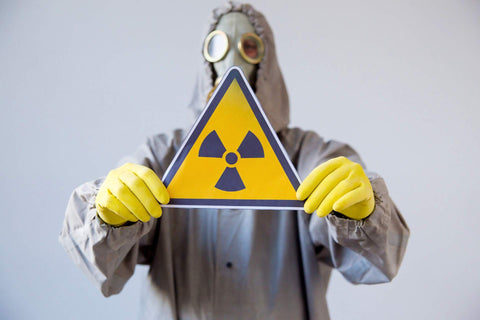
Radiation, a powerful tool in medicine, industry, and research, requires a nuanced understanding of its types and the associated risks.
This chapter delves into the distinction between non-ionizing and ionizing radiation, highlighting the health implications and the importance of protective measures.
Non-ionizing vs. Ionizing Radiation
Understanding the differences between Non-ionizing and Ionizing radiation is crucial for leveraging their benefits and mitigating their risks. The table below offers a concise comparison, highlighting their characteristics, sources, applications, and safety considerations.
|
Feature |
Non-ionizing Radiation |
Ionizing Radiation |
|
Energy Level |
Insufficient energy to ionize atoms or molecules |
Enough energy to ionize atoms, leading to cellular and DNA damage |
|
Common Sources |
Light, microwaves, radio waves |
X-rays, gamma rays |
|
Applications |
Communication devices, microwave cooking |
Medical diagnostics and treatments, sterilization |
|
Safety Considerations |
Generally safe with everyday exposure, but requires safety guidelines for prolonged exposure |
Requires stringent safety protocols to manage exposure risks due to the potential for cellular and DNA damage |
Health Risks of Ionizing Radiation
While invaluable in medical and industrial applications, ionizing radiation carries inherent health risks that necessitate careful management and protection measures.
Understanding these risks is essential for minimizing potential harm from exposure.
Here's a closer look at the potential health implications:
- Cellular Damage: Ionizing radiation can break chemical bonds, leading to mutations that can cause cancer. This damage is only sometimes apparent, making long-term vigilance important.
- Acute Radiation Syndrome (ARS): High levels of exposure can lead to ARS, characterized by nausea, vomiting, fatigue, and more severe health effects, depending on the dose received.
- Long-term Health Effects: Beyond the immediate impacts, there's an increased risk of cancer and genetic damage that can affect future generations.
- Skin Burns and Hair Loss: Direct exposure to high doses of ionizing radiation can cause burns on the skin and hair loss, similar to severe sunburn.
- Immune System Impact: Radiation can weaken the immune system, making the body more susceptible to infections and illnesses.
- Reproductive Health Effects: High doses of radiation can have detrimental effects on reproductive health, including reduced fertility and risks of birth defects.
These potential health risks underscore the critical importance of radiation safety protocols and protective measures to safeguard against the harmful effects of ionizing radiation.
The next step in ensuring safety and minimizing exposure risks involves precisely measuring and monitoring radiation levels, a vital component in the ongoing effort to protect health and the environment from the potential hazards of ionizing and non-ionizing radiation.
📌Chapter 3: Radiation Measurement and Monitoring
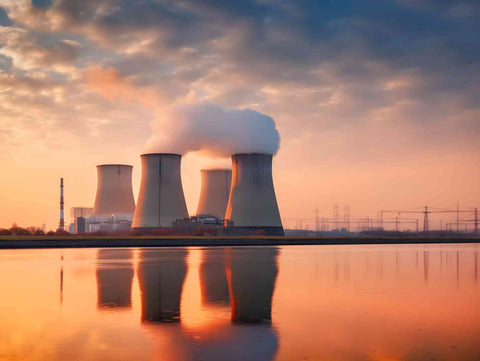
Measuring and monitoring radiation ensures that exposure levels are within safe limits, protecting public health and safety.
These measurements help us quantify the presence and intensity of radiation, enabling effective management and control.
Below, we delve into the tools and techniques for radiation measurement and the practical application of monitoring in various environments.
Radiation Measurement Units
Radiation measurement units provide a standard way of quantifying the radiation emitted by radioactive materials or experienced in an environment.
- Becquerel (Bq): This unit measures the rate of radioactive decay. It is defined as the activity of a quantity of radioactive material in which one nucleus decays per second, offering a direct insight into a material's radioactivity level.
- Curie (Ci): Representing radioactivity, the Curie is an older unit still used in some contexts. It is based on the activity of one gram of radium-226, equivalent to 3.7 × 10^10 decays per second, and serves as a bridge between historical and modern radiation measurements.
Devices for Measurement and Monitoring
Specialized devices are employed to measure and monitor radiation levels accurately, each designed for specific types of radiation and applications.
- Dosimeters: These devices track exposure to ionizing radiation and are commonly used by workers in environments with potential radiation exposure. Dosimeters can measure cumulative radiation dose received over time, which is crucial for ensuring worker safety and regulatory compliance.
- Geiger Counters: Known for their ability to detect and measure ionizing radiation, Geiger counters are widely used for environmental monitoring and radiation protection. They are versatile devices that can detect various types of radiation, including alpha, beta, and gamma rays.
- Alpha Radiation Survey Meters: These meters are specifically designed to detect alpha particles, which are a significant concern in nuclear facility safety. Alpha radiation survey meters help assess contamination and ensure safety protocols are followed to protect workers and the environment.
Practical Monitoring Tips
Accurate and reliable radiation monitoring is essential for safety, requiring regular maintenance of devices and an understanding of the environment being monitored.
- Regular Calibration: Ensuring that monitoring devices are regularly calibrated is crucial for accuracy. Calibration checks against known standards prevent drift and ensure reliable and consistent readings.
- Understanding Background Radiation Levels: Knowledge of background radiation levels in the environment is essential for identifying anomalies. This understanding helps differentiate between normal environmental radiation and levels that may indicate a leak or an unsafe condition.
- Personal Dosimeters: For individuals working in or near radiation zones, wearing personal dosimeters is the best practice for monitoring exposure. These devices provide immediate feedback on accumulated radiation dose, enabling proactive exposure management and adherence to safety limits.
Adhering to these guidelines and using the correct measurement units and monitoring devices enables the maintenance of a safe environment where radiation is present, protecting individuals and the broader community.
Understanding and applying the principles of radiation measurement and monitoring, we lay the groundwork for ensuring safety and preparedness in the face of nuclear incidents.
📌Chapter 4: Preparation for Nuclear Incidents
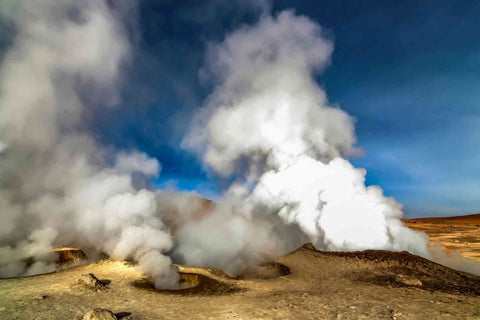
Nuclear incidents, though rare, require preparedness to minimize risks to health and safety. This chapter outlines steps for effective sheltering, the essentials of an emergency kit, and the importance of having an evacuation plan.
Sheltering in Place
Sheltering in place is a vital initial response to minimize exposure to hazardous materials during a nuclear incident.
- Immediate Steps: The first actions include sealing windows and doors, staying indoors, and following official guidance to reduce exposure to radiation and other hazards.
- Sheltering Duration: The required duration for sheltering can vary significantly, ranging from a few hours to several days, depending on the severity and nature of the incident.
Emergency Kits and Alerts
A well-prepared emergency kit and staying informed through alerts are essential components of nuclear incident preparedness.
- Kit Essentials: Your emergency kit should contain non-perishable food, water, essential medications, and a battery-powered radio to receive updates during the incident.
- Staying Informed: Signing up for emergency alerts and monitoring local news are crucial steps for obtaining real-time information and instructions from authorities.
Evacuation Planning
Proper evacuation planning ensures a safe and orderly departure from a potentially dangerous area.
- Know Your Routes: It's important to familiarize yourself with multiple evacuation paths out of your area to adapt to changing conditions.
- Family Communication Plan: A well-thought-out communication plan ensures that all family members know how to contact each other and where to reunite if separated during an evacuation.
Individuals can significantly enhance their resilience and safety in the face of nuclear incidents by taking these steps toward preparation.
This readiness protects health and safety, providing peace of mind and laying a solid foundation as we discuss radiation shielding and protection techniques in the next chapter.
📌Chapter 5: Radiation Shielding and Protection Techniques
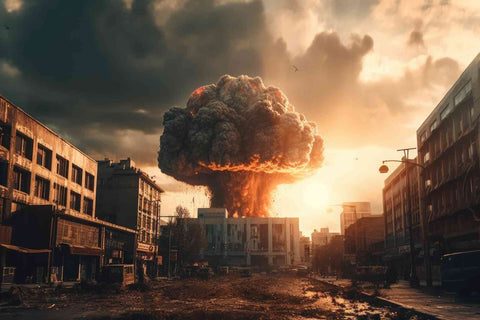
In radiation safety, effective shielding and protection techniques are paramount for minimizing exposure and safeguarding health.
This chapter delves into the foundational principles of time, distance, and shielding, as well as the critical role of personal protective equipment (PPE) and its application across various scenarios to ensure maximum protection against radiation.
Principles of Protection
The foundation of radiation protection lies in three key principles: time, distance, and shielding, each playing a crucial role in reducing exposure risks.
- Time: Reducing the time spent near a radiation source is a straightforward yet effective way to lower the overall dose of radiation exposure.
- Distance: Increasing the distance from a radiation source can significantly decrease exposure, leveraging the inverse square law for radiation intensity.
- Shielding: Implementing materials like lead or concrete barriers can effectively block or attenuate radiation, providing a physical shield between individuals and radiation sources.
Personal Protective Equipment (PPE)
Personal protective equipment serves as the first line of defense, tailored to protect against specific forms of radiation in diverse environments.
- For Different Radiation Forms: Depending on the type of radiation, specific PPE such as lead aprons or thyroid shields is designed to offer protection, particularly against X-rays and gamma rays.
- Application in Scenarios: In medical settings, industrial environments, or during emergency response efforts, selecting and utilizing the appropriate PPE is crucial for maintaining safety and minimizing radiation exposure.
By embracing these principles and effectively utilizing PPE, individuals and organizations can significantly enhance their protection against radiation.
This approach not only safeguards health but also prepares us for handling contamination.
How can we extend these protective measures to deal with contamination directly through self-decontamination procedures?
📌Chapter 6: Self-Decontamination Procedures

In the event of exposure to radioactive materials, prompt and effective self-decontamination is critical in minimizing further contamination and reducing exposure risks.
This chapter provides a step-by-step guide on conducting self-decontamination, highlighting the importance of gentle yet thorough cleansing practices to protect the skin and prevent further harm.
Steps for Decontamination
Immediately starting the decontamination process in rescue services and environments will be very important in reducing the risk of radiation exposure.
- Removing Contaminated Clothing: This simple action can significantly reduce overall contamination levels, immediately decreasing the risk of further exposure.
- Washing Off Radioactive Materials: Employing soap and water to gently but thoroughly cleanse the skin and hair helps remove any adhering radioactive particles, further reducing potential harm.
- Clean Clothing: When uncontaminated clothing is unavailable, shaking out and temporarily re-wearing the original clothes after thorough decontamination can be a provisional solution until cleaner options are accessible.
Through these steps, individuals can effectively reduce their exposure to harmful radioactive materials, mitigating immediate risks and setting the stage for professional medical evaluation and care.
As we understand the process and importance of self-decontamination, we are naturally led to question how we can recognize and address the effects of radiation exposure.
How do we identify the signs of radiation sickness, and what first aid measures should be taken to address them?
📌Chapter 7: Radiation Sickness and First Aid

Acute radiation sickness occurs at exposure to high doses of ionizing radiation. This chapter discusses its symptoms, recommends related first-aid tips, and explains why emergency medical response and decontamination are extremely important.
Symptoms
Identifying the early signs of radiation sickness is crucial for timely intervention.
- Early Signs: The initial symptoms include nausea, vomiting, and fatigue. These symptoms can appear within hours of exposure and are key indicators of acute radiation syndrome.
- Additional Symptoms: As the condition progresses, individuals may experience various other symptoms, including:
First Aid Measures
Taking immediate action through first aid can significantly mitigate the effects of radiation exposure through these steps:
- Decontamination: Begin by carefully removing and bagging contaminated clothing to reduce further radiation absorption. Avoid vigorous scrubbing to prevent skin damage.
- Cleansing: Gently wash the skin and hair with soap and water to remove residual radioactive particles.
- Hydration and Rest: Drink plenty of fluids to stay hydrated and rest in a safe, sheltered area while awaiting further instructions from authorities.
Emergency Response
Promptly seeking professional medical help is paramount in cases of suspected radiation sickness.
- Once first aid measures have been applied, seeking medical attention immediately is imperative. Healthcare professionals can offer experts to be around, given that they can provide specialized and more comprehensive decontamination, which has been proven to significantly enhance recovery and increase the chances of returning to a normal life.
- Emergency medication services have a range of measures at hand for managing different aspects associated with radiation exposure. For instance, administer medicine that can lower radiation absorption and rapidly treat the symptoms.
By recognizing important measures and responding promptly to medical issues, people can reduce the severity of illnesses and improve recovery possibilities.
As we navigate the immediate response to radiation exposure, it's equally important to consider the future. How do we monitor health over the long term, and what measures can be taken to prevent further radiation-related issues?
📌Chapter 8: Long-term Health Monitoring and Prevention

Radiation exposure might have adverse health effects. Therefore, this period after exposure is extremely important, and it is advised that we adopt a proactive stance, implying that we maintain healthy lifestyles to recover effectively.
This section stresses the importance of dietary transition, periodical medical checkups, and strategies to prevent long-term radioactive impact in the event of radiation incidents, giving suggestions to support health and resilience after radiation exposure.
Health Monitoring and Lifestyle
The focused approach to diet, periodic health monitoring, and preventive practices is vital for health recovery and the subsequent management of long-term health issues following radiation exposure.
- Dietary Recommendations: We propose consuming rich fruits, veggies, and whole grains to help heal and strengthen the body against infections.
- Regular Medical Check-ups: Regular assessments of space radiation-related conditions are an indispensable aspect of medical evaluation for the prompt identification, prevention, and management of such conditions, allowing for as early an intervention as possible.
- Minimizing Future Exposure: Practicing radiation safety rules from the beginning and abiding by the recommended safety standards effectively alleviates the risk of additional exposure. They, thus, help in preventing future health issues.
Through implementing these approaches, individuals can provide more opportunities for recovery and lessen the possibility of long-term harmful effects from radiation exposure.
While on our path to physical healing, it is vital to tackle the psychological impact such events may have on us.
📌Chapter 9: Psychological Impact and Coping Strategies
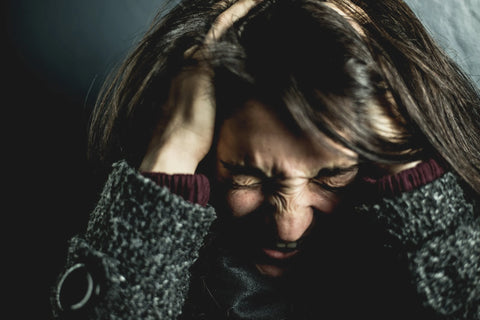
Trauma left by radiation, either due to the accident/incident or exposure to radiation, can have a lasting influence on people and communities, potentially distorting mental health dramatically.
Identifying the impact and the way to solve the problems is key to recovery and resilience.
This chapter deals with the psychological reactions to such events, offers coping strategies, and proposes strengthening support systems.
Psychological Responses and Coping
Common Responses
People exposed to radiation incidents may experience a broad spectrum of psychological reactions ranging from anxiety to fear.
- Anxiety: Issues like health concerns, environmental issues, and the future can all trigger a feeling of underlying anxiety.
- Stress: The fast, intense period following the incident can cause stress.
- Depression: The situation can be overwhelming and push the individual into hopelessness and depression.
Case Study: After the Chernobyl accident, there were symptoms of PTSD, depression, and anxiety in many of the affected population, which once more showed how vital it is to put in place an integrated mental health program at the time of a nuclear accident.
Coping Strategies
Effective coping strategies are essential for managing the psychological impacts of radiation exposure:
- Seeking Support: Touch base with friends, relatives, and peer-support groups to talk with and share feelings and experiences.
- Practicing Self-Care: Engage in activities that promote relaxation and good health, such as sports and dance, as well as hobbies like music, painting, and knitting.
- Staying Informed: Gather facts from trustworthy sources and analyze the situation to overcome the fear of uncertainty.
Practical Tips:
- Set a daily routine that includes the activities you enjoy most.
- Be selective about what news you choose to watch, and avoid those that make you anxious; instead, use updates from health and safety organizations as your main source of information.
Support Systems
Accessing support systems is crucial for psychological recovery:
- Community Resources: Local health departments and community centers often offer counseling services and support groups.
- Professional Help: Psychologists and psychiatrists can provide therapies tailored to individuals experiencing trauma and stress-related disorders.
Leveraging Support:
- Don't hesitate to seek professional help if you're struggling with your mental health.
- Use community resources like workshops and support groups to connect with others with similar experiences.
The psychological aftermath of radiation exposure demands attention and action as much as the physical health effects.
By understanding common psychological responses, implementing effective coping strategies, and leveraging support systems, individuals and communities can navigate the path to recovery and resilience.
This holistic approach to dealing with the aftermath of radiation exposure is crucial for the well-being of all affected individuals, ensuring a supportive environment for both physical and mental health recovery.
📌Chapter 10: Conclusion to Radiation Safety
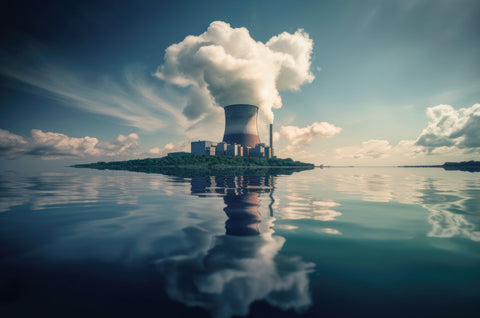
Radiation is essential to many areas of modern life. Therefore, the wiser approach to its use is to reap all the benefits and simultaneously contain the negative aspects.
With this guide, the reader should gain a good understanding of radiation safety issues, from learning about different types of radiation and their benefits to response strategies in case of a nuclear accident.
Key Takeaways
- Awareness and education are fundamental to minimizing radiation exposure risks.
- Preparedness, including having an emergency plan and knowing protective measures, enhances safety in potential nuclear incidents.
- Ongoing learning and adherence to safety practices ensure the beneficial use of radiation in various fields.
Embracing these principles ensures that individuals and communities can safely benefit from the remarkable capabilities of radiation, from medical advancements to power generation, while protecting their health and the environment.
📖 Further Readings:
